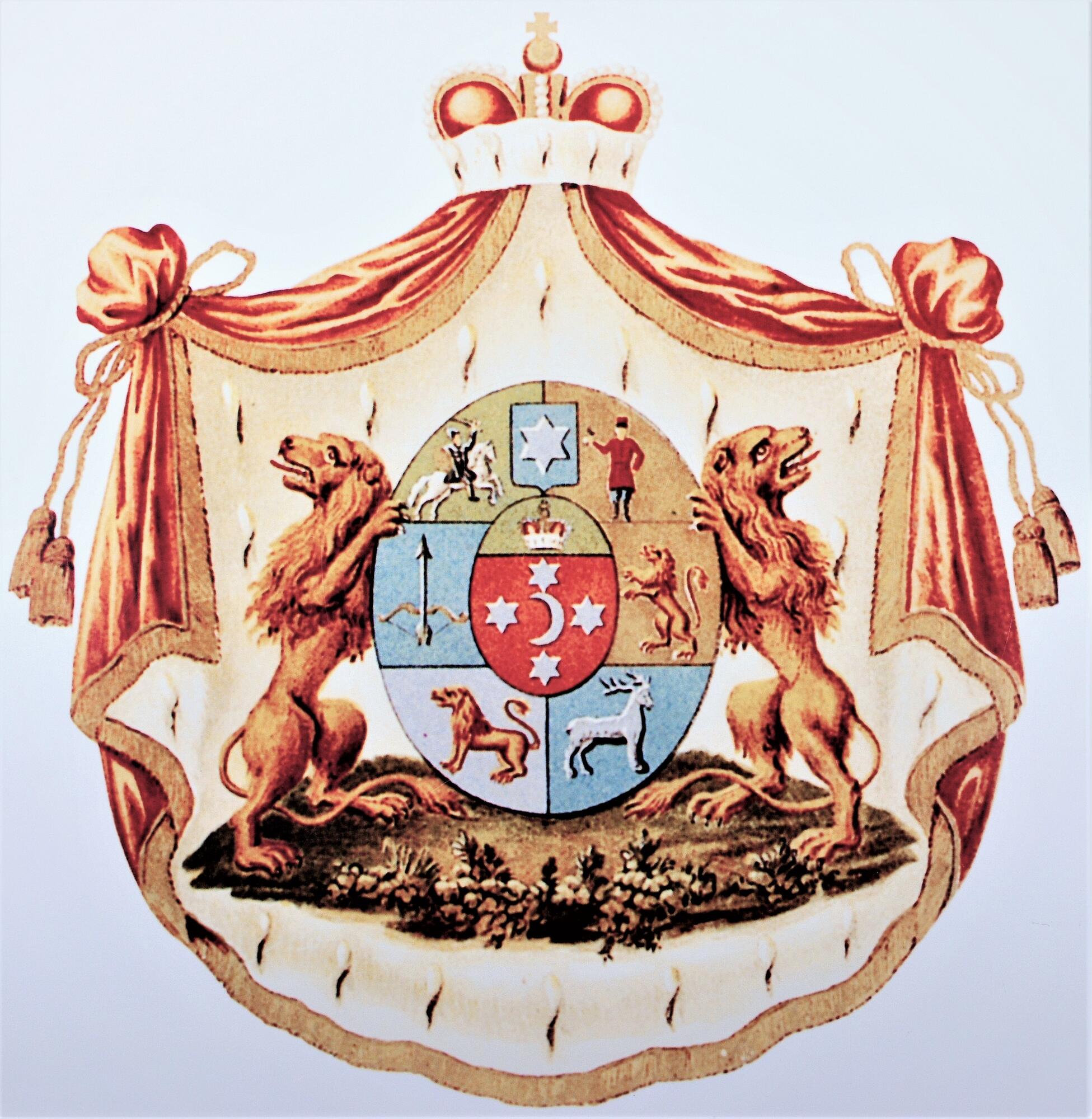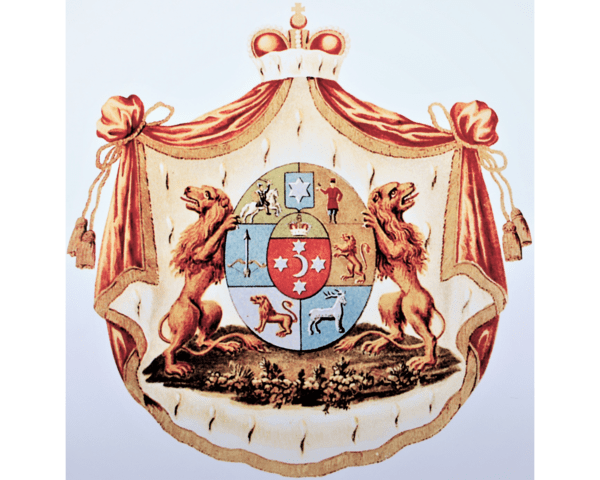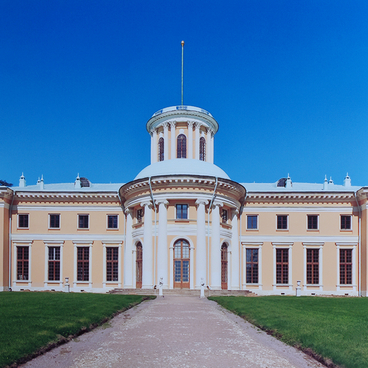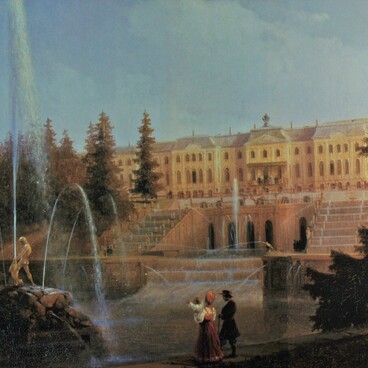In 1797, Emperor Paul I issued a decree ordering an official armorial of Russian noble families to be compiled. Nikolai Yusupov submitted to the Senate all the necessary materials and documentary evidence of his noble origin. So, the coat of arms of the Yusupov Princes was included in “The General Armorial of the Noble Families of the Russian Empire”, approved by the sovereign in January 1799. It contained an official description of the family symbol.
A coat of arms is a heraldic visual design on a shield, in the middle of which is a smaller shield, topped with a crown. Under the crown on a red field, there is a silver moon with its horns turned to the right. The crown is surrounded by four six-pointed silver stars. Above is another small shield, in which a six-pointed silver star is depicted on a blue field.
The large shield is divided into six parts, each containing a separate image. On a green background, a rider on a white horse gallops to the left. He raises up his sword and holds a golden shield. Against a golden background, a man dressed as a Tartar holds a hammer in his right hand. On a blue background, there is a gold bow pointing upwards with an arrow on its bowstring. In the fourth and fifth parts, there are lions on a silver background, and in the sixth part, there is a silver deer on a blue background. The shield is topped by a crown and mantle, symbolizing princely dignity, and the shield is held by two lions, looking out to the sides.
However, not all images of the Yusupov coat of arms correspond to this description. Heraldists are still investigating the reasons for inconsistencies. In different versions of the coat of arms the color of the fields, the poses of the lions, the number of the star points vary. For example, at the Yusupov Palace on the Moika River in St Petersburg, a wooden coat of arms above the door depicts a falcon instead of a hammer in the hands of a man in Tatar dress, the silver moon has a face, the deer is not running, but standing, and the six-pointed star in the upper small shield is replaced by a pentagram.
Some researchers suggest that these discrepancies are due to the fact that the coat of arms of Yusupov Princes for a long time had no formal description. So it did not have a unified standard image and markings.
A coat of arms is a heraldic visual design on a shield, in the middle of which is a smaller shield, topped with a crown. Under the crown on a red field, there is a silver moon with its horns turned to the right. The crown is surrounded by four six-pointed silver stars. Above is another small shield, in which a six-pointed silver star is depicted on a blue field.
The large shield is divided into six parts, each containing a separate image. On a green background, a rider on a white horse gallops to the left. He raises up his sword and holds a golden shield. Against a golden background, a man dressed as a Tartar holds a hammer in his right hand. On a blue background, there is a gold bow pointing upwards with an arrow on its bowstring. In the fourth and fifth parts, there are lions on a silver background, and in the sixth part, there is a silver deer on a blue background. The shield is topped by a crown and mantle, symbolizing princely dignity, and the shield is held by two lions, looking out to the sides.
However, not all images of the Yusupov coat of arms correspond to this description. Heraldists are still investigating the reasons for inconsistencies. In different versions of the coat of arms the color of the fields, the poses of the lions, the number of the star points vary. For example, at the Yusupov Palace on the Moika River in St Petersburg, a wooden coat of arms above the door depicts a falcon instead of a hammer in the hands of a man in Tatar dress, the silver moon has a face, the deer is not running, but standing, and the six-pointed star in the upper small shield is replaced by a pentagram.
Some researchers suggest that these discrepancies are due to the fact that the coat of arms of Yusupov Princes for a long time had no formal description. So it did not have a unified standard image and markings.



